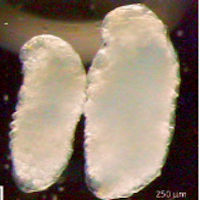 Smart Citations
Smart CitationsSee how this article has been cited at scite.ai
scite shows how a scientific paper has been cited by providing the context of the citation, a classification describing whether it supports, mentions, or contrasts the cited claim, and a label indicating in which section the citation was made.
Biology and life table parameters of Metaphycus marensis Chirinos and Kondo, 2019, an encyrtid parasitoid of guava cottony scale in Venezuela
The guava cottony scale, Capulinia linarosae (Hemiptera: Eriococcidae) is an important pest of guava, Psidium guajava, in Venezuela and northern Colombia. Metaphycus marensis (Hymenoptera: Encyrtidae) is a new primary parasitoid species recently described associated with this pest. Studies were conducted on oogenesis, life cycle, survival, daily fecundity and life table parameters of Metaphycus marensis Chirinos and Kondo (Hymenoptera: Encyrtidae): intrinsic rate of natural increase (rm), generation time (T) and net reproductive rate (Ro). Females of M. marensis are synovigenic and this parasitoid goes through four larval instars and completes its life cycle in about 12.7 days. Survival was of type I, where mortality was initially detected by encapsulation of eggs and larvae. Metaphycus marensis was able to multiply its population 28.7 times (Ro) with rm of 0.242 in 13.9 days (T). The short generation time of the parasitoid in relation to its eriococcid host could represent a desirable attribute as a natural enemy. However, the low fecundity and the encapsulation by the host must be analyzed through field experiments in order to evaluate its effectiveness as a biological control agent for C. linarosae.
How to Cite
PAGEPress has chosen to apply the Creative Commons Attribution NonCommercial 4.0 International License (CC BY-NC 4.0) to all manuscripts to be published.

 https://doi.org/10.4081/jear.2020.8810
https://doi.org/10.4081/jear.2020.8810




